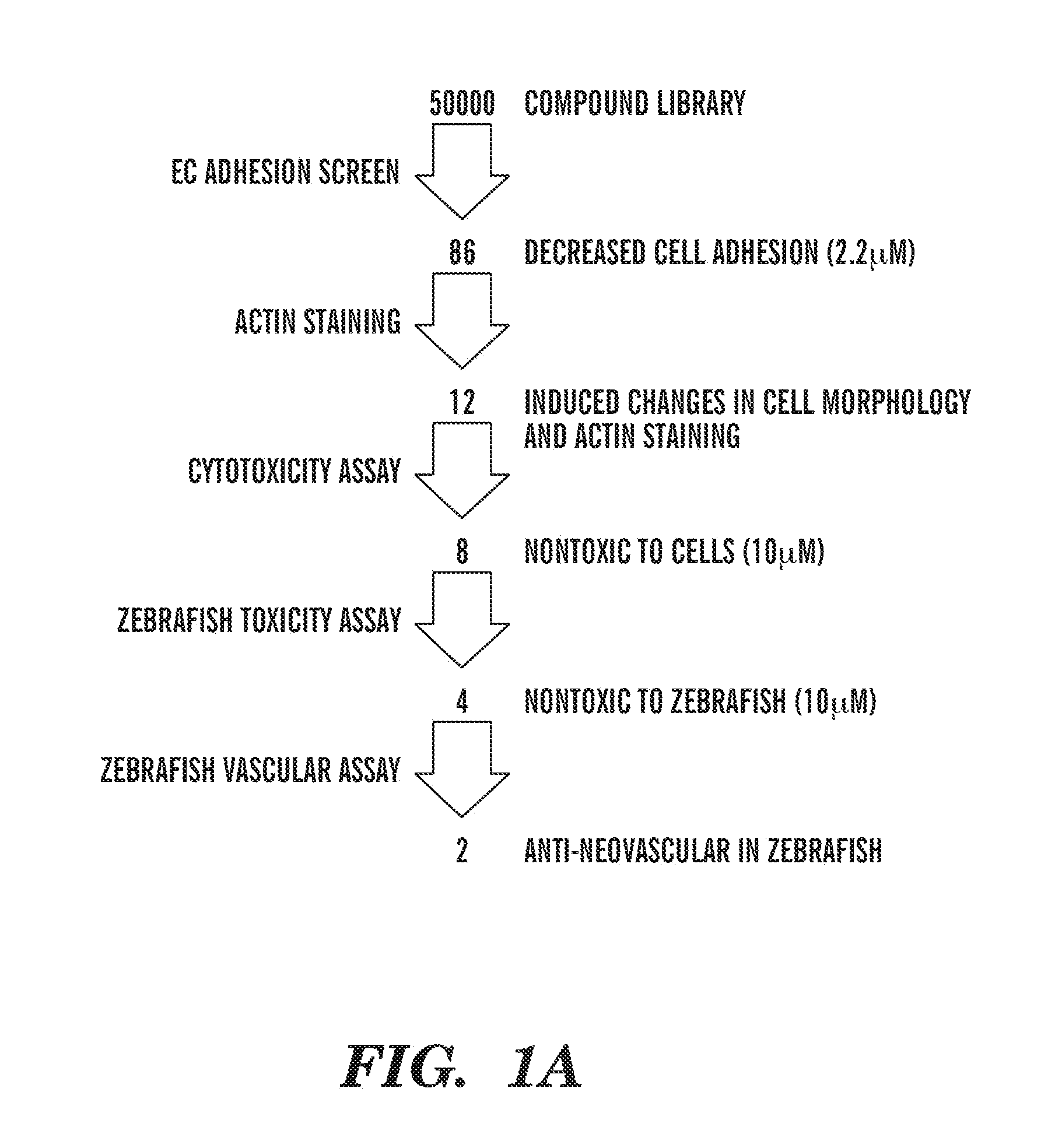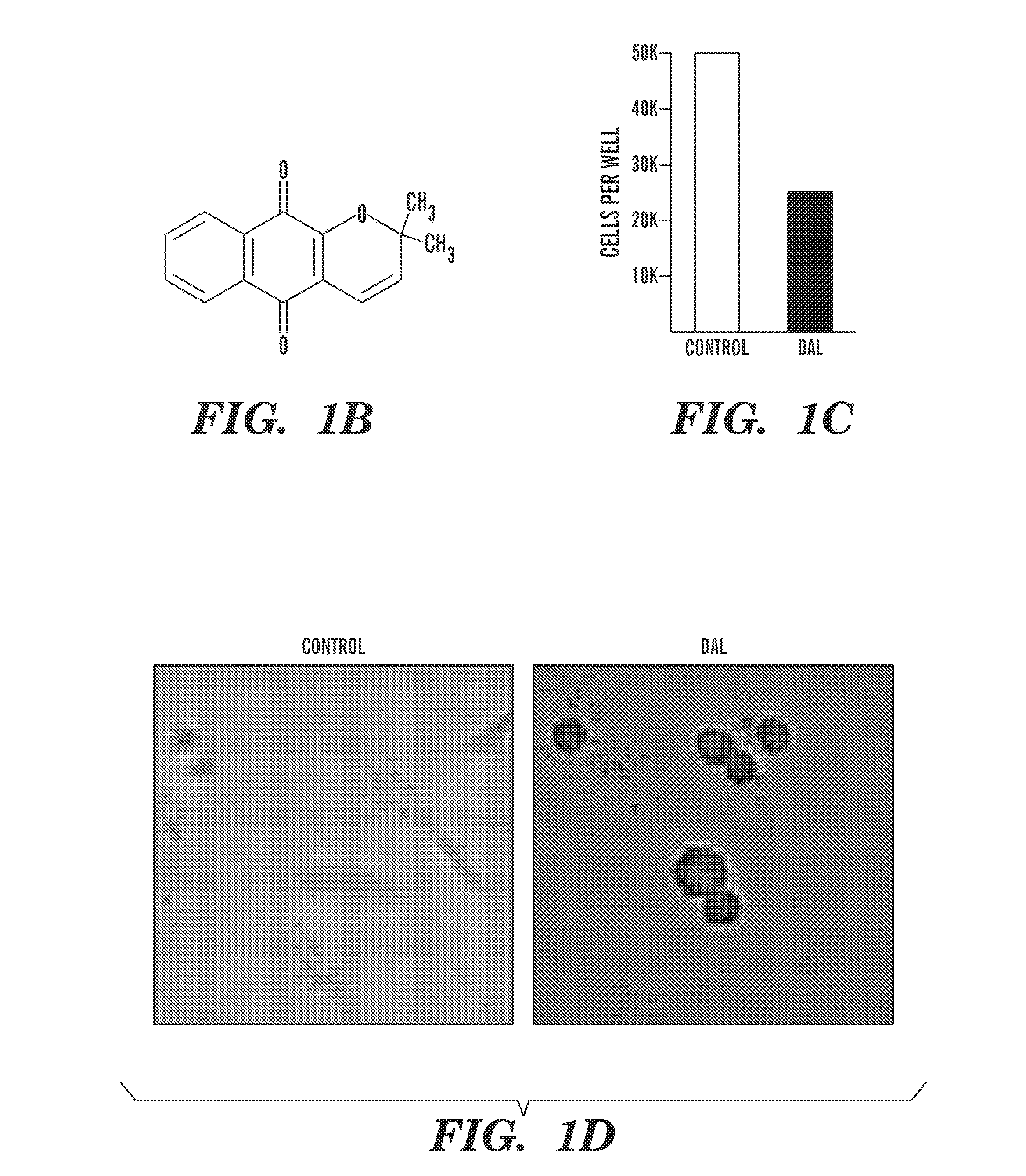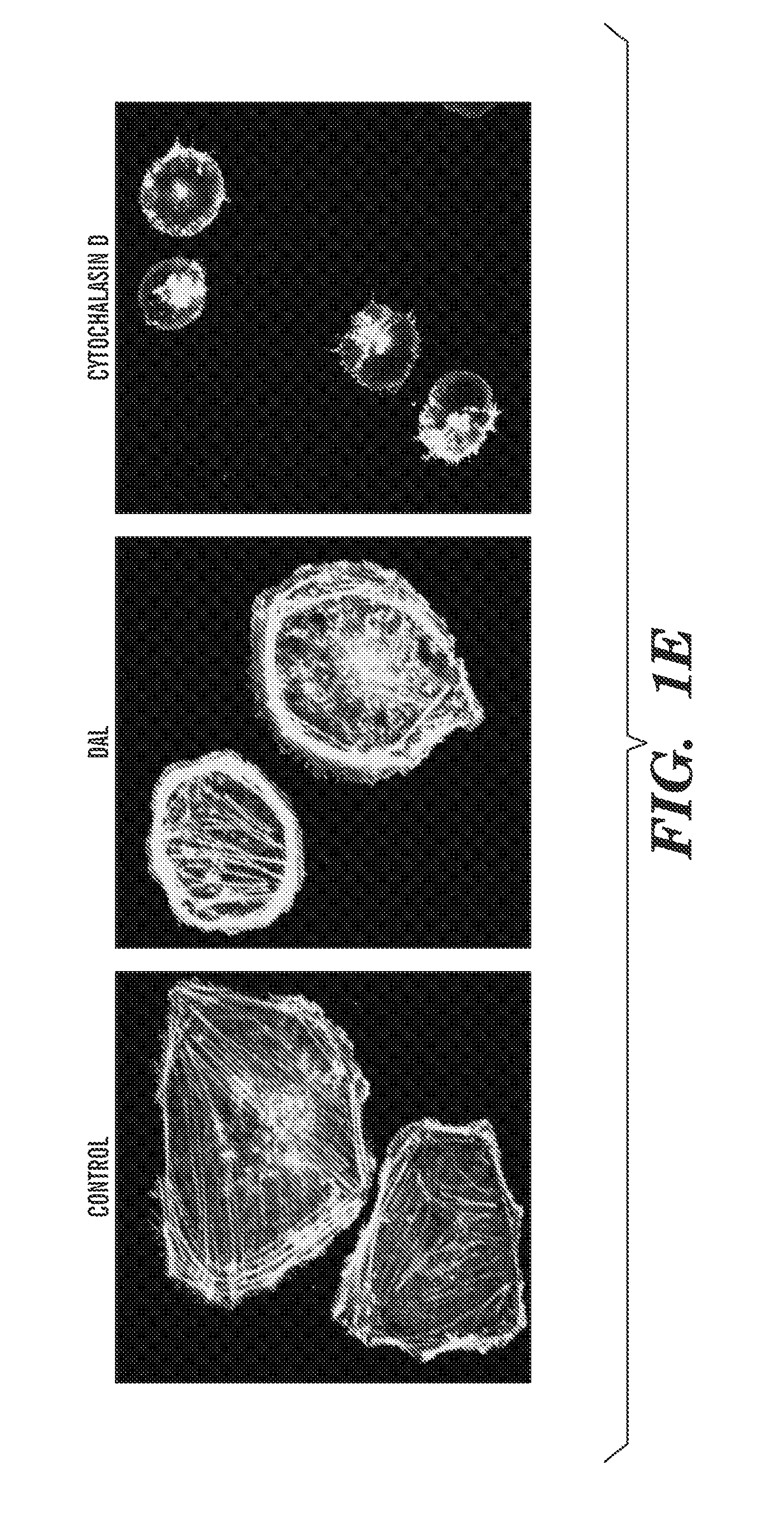Treatment of angiogenic- or vascular-associated diseases
a technology for vascular association and angiogenic or vascular disease, which is applied in the direction of extracellular fluid disorder, drug composition, therapy, etc., can solve the problems of insufficient current treatment of angiogenesis-dependent diseases, and inability to achieve the effects of reducing vascular density and low toxicity of dal
- Summary
- Abstract
- Description
- Claims
- Application Information
AI Technical Summary
Benefits of technology
Problems solved by technology
Method used
Image
Examples
example 1
Identification of DAL from a Compound Library
[0367]A screening strategy was developed to identify potential agents that target adhesion of endothelial cells or cancer cells to their substrate. To this end, 50,000 compounds were first screened in a high-throughput manner (FIG. 1A). The initial screening step quantified the number of cells remaining attached to their wells following incubation with each compound and subsequent washing steps. Only 86 compounds affected cellular adhesion in the assay. Cell adhesion adaptor proteins have a domain for binding actin filaments (15-16), thus adhesion molecules are directly linked to the actin cytoskeleton. The agents that affect cell adhesion can be monitored through remodeling of actin filaments. As the second screening step, the effect of the selected compounds on actin assembly and redistribution was assessed by fixing and staining treated cells with phalloidin. Changes in actin assembly and cell shape after treatment with 12 compounds we...
example 2
Antivascular Effects of DAL in Zebrafish Models
[0368]To elucidate the potential impact of DAL on the process of vascular network formation, its effects in zebrafish embryos at different stages of development were assessed. To visualize vessel defects, transgenic fish expressing EGFP in endothelial cells (Tg(fli1:EGFP)y1) were used (19-20). This model expresses EGFP in blood vessel ECs throughout normal development and during fin regeneration (21). The effects of DAL on normal vascular development in zebrafish embryos were first characterized. In control embryos, developing vessels migrated from the lateral plate mesoderm to the midline, where they coalesced into a vascular cord. These endothelial clusters subsequently established the pattern of the dorsal aorta and posterior cardinal vein. Intersomitic vessels sprouted at designated branch sites in control embryos after dorsal aorta formation. In contrast, after treatment with DAL, the sprouting of intersomitic vessels to their desi...
example 3
DAL Prunes Tumor Vasculature
[0370]Since the zebrafish data indicated that DAL is a potential antivascular agent selective for vasculature, it was sought to determine the effects of DAL on tumor vasculature in mammals. To study these effects quantitatively, fluorescent angiographies were conducted in female SCID mice bearing orthotopic 4T1 mammary tumors in mammary fat pad windows via intravital multiphoton microscopy (FIG. 3A) (22-24). These mice were treated with 37.5 mg / kg DAL or saline daily for 5 days by i.p. injection. It was determined that DAL treatment decreases tumor vascular volume fractions—a measure of vascular density—compared with saline treatment (FIG. 3B, p<0.002, day 4). Furthermore, DAL treatment lowers total tumor vascular length (normalized to tumor volume) versus saline treatment (FIG. 3C, p=0.007, day 2; p=0.02, day 4), whereas mean tumor vascular diameter remains the same (FIG. 3D). These data indicate that DAL reduces vascular density in tumors through vessel...
PUM
| Property | Measurement | Unit |
|---|---|---|
| time | aaaaa | aaaaa |
| time | aaaaa | aaaaa |
| time | aaaaa | aaaaa |
Abstract
Description
Claims
Application Information
 Login to View More
Login to View More - R&D
- Intellectual Property
- Life Sciences
- Materials
- Tech Scout
- Unparalleled Data Quality
- Higher Quality Content
- 60% Fewer Hallucinations
Browse by: Latest US Patents, China's latest patents, Technical Efficacy Thesaurus, Application Domain, Technology Topic, Popular Technical Reports.
© 2025 PatSnap. All rights reserved.Legal|Privacy policy|Modern Slavery Act Transparency Statement|Sitemap|About US| Contact US: help@patsnap.com



